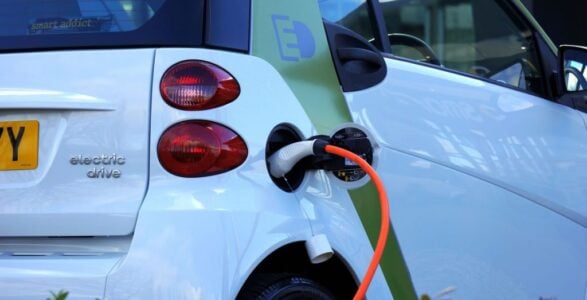Guide to PHEVs: Plug-In Hybrid Electric Vehicles

Published 22 June 2022
What is a plug-in hybrid ?
A plug-in hybrid car, or plug-in hybrid electric vehicle (PHEV), bridges the gap between battery electric vehicles (BEVs) and standard petrol or diesel cars. PHEVs use two power sources – a rechargeable battery to power an electric motor together with another fuel such as petrol or diesel, to power an internal combustion engine.
How does a plug-in hybrid work?
As the name suggests, a plug-in hybrid can be plugged into the mains electricity to recharge the battery.
PHEVs will usually run on electricity until the battery is drained, when they will automatically switch over to the internal combustion engine for power.
From listening to the radio to powering the wheels, plug-in hybrids harness energy from both the combustion engine and electricity.
How do you charge a PHEV?
Charging a plug-in hybrid car works in much the same way as charging an electric vehicle. but with faster charging times.
Most PHEVs are supplied with a charging cable. Simply plug this into the charging port which is usually on the front or side of the car, and plug the other end into the mains. It is advisable to invest in a home charge point to achieve the fastest charging times. Take advantage of cheaper off-peak energy tariffs to reduce the cost of charging at home.
The cost and speed of charging a plug-in hybrid car depends on the size of the battery and the type of charger. Plug-in hybrids with smaller batteries can recharge in about 3 hours at 120V and 1.5 hrs at 240V.
What’s the difference between a plug-in hybrid and a mild hybrid vehicle ?
All hybrid cars are powered by internal combustion engines and electric motors.
In a mild hybrid the two power sources operate independently of each other. A mild hybrid will only use the electric motor to support the engine during acceleration and cruising. You cannot use the electric motor to power the car on its own.
Plug-in hybrids offer the best of both worlds in that you can run on electricity only if you wish, but always have that backup combustion engine. With a plug-in hybrid if you want to continue using the benefits of the electric motor you need to recharge regularly.
Alternatively, there are many rapid charging points throughout the UK and Ireland and they will be able to charge your PHEV at a faster speed, these faster charging points are designed to make electric vehicles more appealing to drivers.
What is the range of a PHEV?
PHEVs have both a battery range and a petrol/diesel range.
The battery range will depend on the model of hybrid vehicle you have but around 30 miles is typical with some of the latest bigger batteries claiming to offer up to 50 miles.
When the battery has discharged all of its energy, the petrol or diesel engine automatically kicks in, giving you another 250-350 miles of range.
What are the advantages of a PHEV?
- Lower CO2 emissions. If you only drive 30 miles a day and recharge fully each night, your PHEV should mostly run on battery power alone and little CO2 will be emitted.
- Electricity is cheaper than petrol or diesel, so short runs using just electricity will save you money.
- Better fuel economy than conventional cars
- Cheap road tax (VED) in the first year. VED is free in the first year for vehicles emitting up to 50g/km of CO2, with the rate increasing to £15 for cars in the 51g/km to 75g/km band.
- Instant torque with driving a PHEV.
- No anxiety of running out of charge on a journey as you have the combustion engine as a backup.
- Silent running in towns and cities, especially when pulling away from junctions and traffic lights. EV mode is also ideal if you need to make a quiet exit from home (or you’re arriving home late after the children have gone to bed).
- The company car tax benefits are even more significant. For cars emitting 1-50g/km of CO2, the benefit in kind (BIK) rate ranges from 2 percent to 14 percent, depending on the electric range. It means that a plug-in hybrid will be cheaper to tax than a petrol or diesel car.
- Plug-in hybrids are better suited to towing than their pure electric counterparts
What are the disadvantages of a PHEV?
- The extra weight of the battery does have a negative impact on the car’s ride and handling.
- Plug-in hybrid cars must be charged regularly if you’re to get the best from them. Otherwise, with the extra weight of batteries, they offer poorer fuel economy than a conventional car. If the battery isn’t charged, you’re simply carrying dead weight.
- Cost is another issue. The Hyundai Ioniq Plug In Hybrid costs around £6,500 more than the Ioniq Hybrid, but only £100 less than the Ioniq Electric. Batteries, software and electric motors are expensive, so a plug-in hybrid variant will always cost more than an equivalent petrol or diesel model.
Back to all help and advice articles



